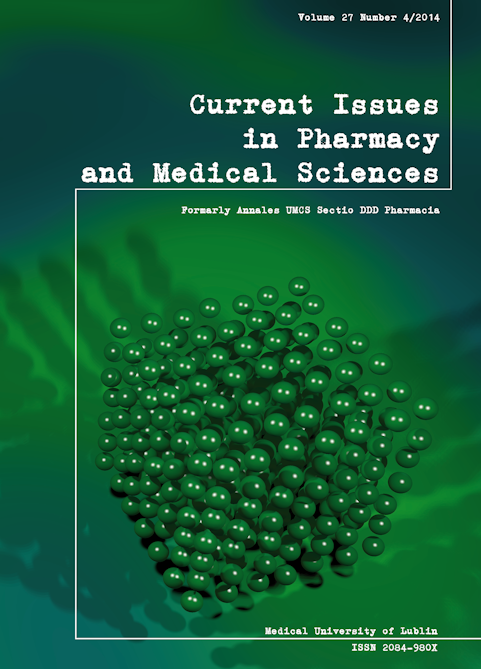Diagnostic problems with follicular thyroid cancer – case study
DOI:
https://doi.org/10.2478/cipms-2014-0001Słowa kluczowe:
minimally invasive follicular, thyroid cancer, bone metastasisAbstrakt
The diagnosis of follicular thyroid cancer is based on postoperative histopathology assessment. In its minimally invasive form, the signs of vascular invasion and capsular infiltration may sometimes be seen only in a small tumor fragment; hence, the diagnosis should be based on multiple histopathology specimens. This case study is a report on a 70-year-old female who was diagnosed with spinal metastasis of follicular thyroid cancer. This diagnosis was established 5 years after partial strumectomy due to goiter and there were no signs of thyroid cancer in postoperative histopathology assessment. Based on this case and literature reports, the authors conclude that the diagnosis of follicular thyroid cancer, especially its minimally invasive forms, may pose a diagnostic problem even when based on postoperative histopathology.
Bibliografia
1. Ban E.J. et al.: Follicular thyroid cancer: minimally invasive tumors can give rise to metastases. ANZ J Surg., 82(3), 137-138, 2012.
2. Bernier M.O. et al.: Survival and therapeutic modalities in patients with bone metastases of differentiated thyroid carcinomas. J Clin Endocrinol Metab., 86(4), 1569, 2001.
3. D’Avanzo A. et al.: Follicular thyroid carcinoma: histology and prognosis. Cancer., 100(6), 1124, 2004.
4. Goldstein N.S., Czako P., Neill J.S.: Metastatic minimally invasive follicular and Hurthle cell thyroid carcinoma. Mod Pathol., 13, 128, 2000.
5. Heffess C.S., Thompson L.D.: Minimally invasive follicular thyroid carcinoma. Endocrine Pathol., 1, 12, 417, 2001.
6. Hindié E. et al.: Bone metastases of differentiated thyroid cancer: impact of early 131I-based detection on outcome. Endocr Relat Cancer.,14(3), 800, 2007.
7. Huang C.C. et al.: Diagnostic and therapeutic strategies for minimally and widely invasive follicular thyroid carcinomas. Surg Oncol., 20(1), 4, 2011.
8. Lin J.D., Chao T.C., Hsueh C.: Follicular thyroid carcinomas with lung metastases: a 23-year retrospective study. Endocr J., 51(2), 223, 2004.
9. McHenry C.R., Phitayakorn R.: Follicular adenoma and carcinoma of the thyroid gland. Oncologist., 16(5), 586-588, 2011.
10. Qiu Z.L. et al.: Efficacy and survival analysis of 131I therapy for bone metastases from differentiated thyroid cancer. J Clin Endocrinol Metab., 96(10), 3078, 2011.
11. Stephenson T. (2013). Patologia chorób tarczycy. In: Choroby tarczycy i przytarczyc. Praktyczny podręcznik. Lewiński A. (editor). Warszawa: MediPage; p. 21-22.
Pobrania
Opublikowane
Numer
Dział
Licencja
Prawa autorskie (c) 2014 Autorzy

Praca jest udostępniana na licencji Creative Commons Attribution-NonCommercial-NoDerivatives 3.0 Unported License.


